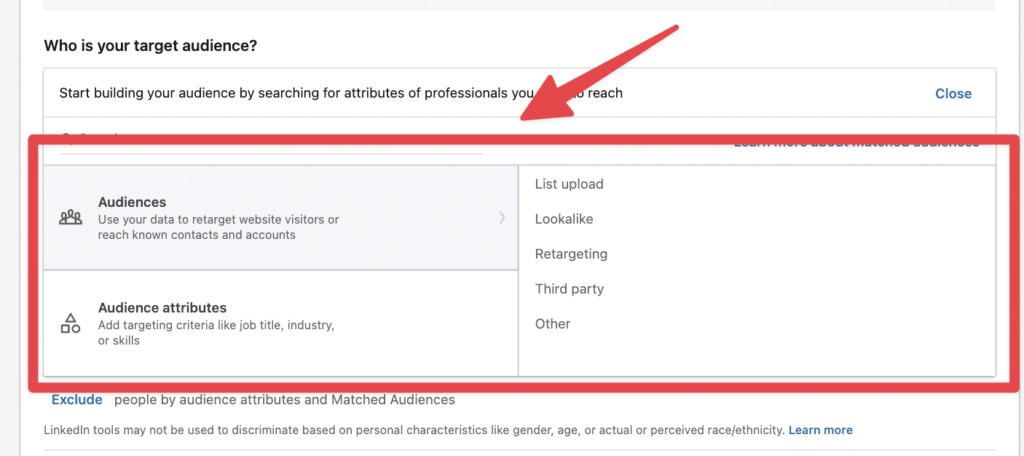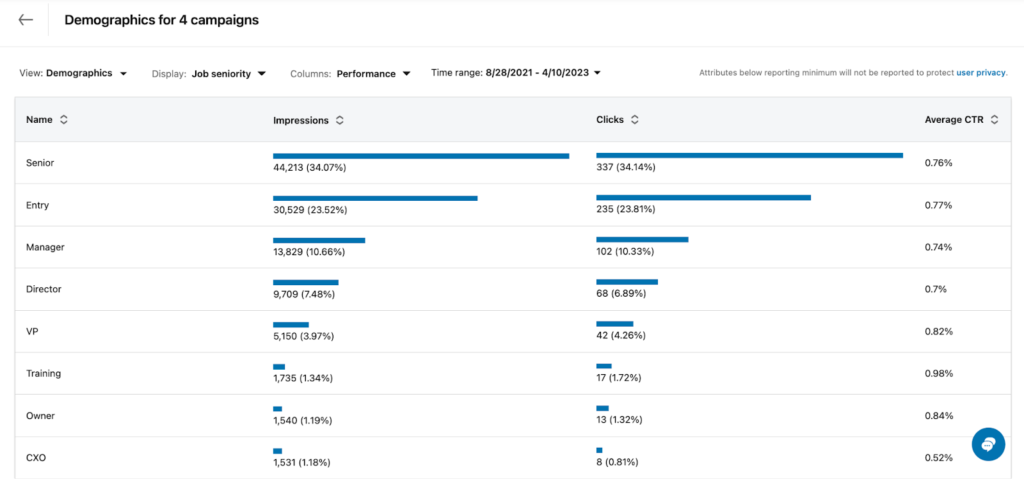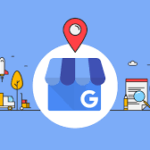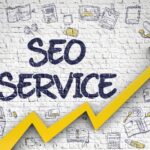The majority of companies are doing trade shows all wrong.
They’re only tapping into a small portion of the potential impact a trade show booth can have.
What are they doing wrong?
They’re limiting their event presence to the booth. It’s 2023 – it’s time to start thinking bigger at trade shows. How?
By using digital marketing tactics to expand your impact beyond the booth and maximize your ROI.
By tapping into digital strategies before, during, and after the event you can maximize your impact. Quit wasting money making a few connections and praying one of them turns into a qualified lead, and start leveraging digital marketing tactics at your events.

Before the Trade Show: Establish Brand Awareness
Trade shows are an opportunity to make a big impression, so why not start building the foundation for success before the event even begins? Digital marketing allows you to establish brand awareness and create a buzz around your company, giving you a head start when it’s time to engage with potential clients and partners at the show.
One powerful way to do this is by using LinkedIn ads to target attendees ahead of time.
Request companies and job titles of attendees
Your first step is to request a list of companies and job titles of attendees from the event organizers. Most organizers will be willing to provide you with this information. Having this list allows you to prepare targeted marketing efforts that will resonate with your trade show audience.
Use the list to run LinkedIn ads
Armed with your list of companies and job titles, you can now run targeted LinkedIn ads to establish brand awareness before the event. These ads can showcase your products, services, and even your booth number, so attendees know where to find you at the show. By reaching out to potential leads before the event, you’ll already have a leg up on the competition.
Begin by uploading the list and establishing the audience for your ads.

Then, craft an eye-catching ad that highlights your company’s unique selling points, while also providing a glimpse of what attendees can expect from your booth at the trade show. As mentioned, it may even be worth adding your booth number so they’ll know where to find you. Choose a budget and roll out the ads!
Make sure to track the results of your LinkedIn ad campaign within LinkedIn Analytics. This will provide valuable insights into the effectiveness of your targeting, messaging, and creative assets. Use this information to optimize your digital marketing strategy for future trade shows and other events.
Not familiar with LinkedIn Ads? Check out our blog on generating leads with LinkedIn.
Pro Tips:
- Introducing your brand and pointing attendees to your booth is great. But even better: what if you could have them read highly valuable content that generates demand for your product or service prior to the event? They’ll be warmed up and open to conversation at your booth. So consider running some ads that promote your best content.
- Create a specific trade show landing page, rather than just sending clickers to your homepage. This will be more effective, and will come into play later.
- Use LinkedIn Ads analytics to view the types of people engaging in your ads and attending the event. You’ll already have their job title and company name, but your ads dashboard should give you some helpful analytics, such as their skillset, job seniority, and more.

During the Trade Show: Collect Contact Info and Run Air Cover
While preparing for the trade show with pre-event digital marketing tactics is essential, it’s equally important to continue leveraging these strategies during the event. By collecting contact information and using LinkedIn and Instagram ads as “air cover,” you can ensure that your booth remains top-of-mind among attendees and direct them to your location.
Collect emails and phone numbers during the event
As you engage with attendees at your booth, make sure to collect their contact information, such as email addresses and phone numbers. By gathering this information, you’ll be able to follow up with potential leads and nurture relationships even after the trade show has ended.
Many trade show booths will collect phone numbers and email addresses by hand. To save yourself time, have them fill out a digital contact card (you can use something like TypeForm or JotForm) and then connect it directly to your CRM. You could also utilize a QR code so they can do it on their phones. Save your team the hassle of manual data entry, and make it as easy as possible on your prospect.

Keep running LinkedIn Ads as air cover
If you’re at a multi-day event, it might be beneficial to consider running your ads as air cover. Use dynamic, visually appealing creatives that showcase your booth’s highlights and the benefits of visiting. Be sure to include your booth number or location to make it easy for attendees to find you.
Consider retargeted social ads
Depending on your audience, it’s possible potential prospects at the event will be spending some time scrolling through Instagram, Facebook, or TikTok Ads as they wander the floor or during a not-so-engaging talk. It might make sense to create an audience of website visitors from your LinkedIn ads, and retarget them on different social media platforms for a well-rounded, multichannel approach.
If you have the Meta or TikTok pixel installed on your site, just create a new audience made up of visitors to your trade show landing page.

Not familiar with retargeting? Check out our post on account-based retargeting.
Pro Tips:
- Offer an incentive for coming by your booth in your air cover ads. Try something like a secret code that will get them free swag or a free sample product at your booth.
- If your location takes up a good bit of real estate, or you’re at a very big event, consider geofencing your air cover ads. LinkedIn and Facebook typically let you target as small a radius as 1 mile. So you could set your ads to show to people in your industry within 1 mile of the event center – you might waste a little spend on people not actually at the event in the area, but if you get your targeting right, this will be minimal.
After the Trade Show: Streamline Your Follow-Up
Following a trade show, the connections you’ve made are fresh and the momentum is high. Capitalizing on this enthusiasm is crucial to maximizing your return on investment. Timely and personalized follow-up is an essential component of your post-event strategy, helping to nurture relationships, solidify leads, and ultimately convert prospects into customers.
Put every contact into your CRM
After the event, import all the contacts you collected into your CRM (Customer Relationship Management) system (unless you collected them directly into it – which we’d recommend). Be sure to set their source as ‘trade show,’ so you can accurately attribute the success of your efforts down the road.
Call SQLs ASAP
If any of your new contacts are ready to buy, skip the emails and give them a call. Don’t lose any momentum you gained at the event. Engage with these high-potential leads and capitalize on their interest while it’s still fresh.
Set lifecycle stage based on conversation
It’s crucial you have your lifecycle stages laid out prior to this step. Based on the conversations you had at the event, set the appropriate lifecycle stage for each contact. If they’re ready to buy, set them as a lead or qualified lead. If they simply stopped by, set them as a subscriber or a basic contact. You can even adjust their lead score manually as you insert them – we’d recommend doing this for anyone you felt was a warm lead.

Not familiar with lifecycle stages? Check out our blog on it.
Enroll contacts in automated email nurturing campaigns
Create a few different email campaigns based on their lifecycle stage to use as follow-ups. Each campaign should contain 5-8 emails. For colder prospects, use the email campaign to share helpful blog content, answer commonly asked questions, and highlight the features of your product / service. For warmer leads, share case studies and testimonials – and provide lots of relevant calls-to-action.
If you don’t already have some kind of email marketing software, consider using HubSpot’s Marketing Hub Pro. If you need to keep the budget low, try out Mailchimp.

Above all, make sure these nurturing campaigns provide value. Don’t just regurgitate general industry knowledge. Ensure what you send out is unique, high quality, and not something your prospect has heard a million times.
Pro Tips:
- Personalization matters. Sending generic, mass emails to everyone you met will yield minimal results. Consider creating fields and using merge tags based on primary pain point, job title, industry, and more.
- Track the results of your trade show appearance closely. If possible, use a marketing automation tool that keeps a close eye on their activity. After the event, it’s important to be able to calculate the ROI, and even more granularly, to know which leads and sales came from traditional trade booth networking vs which were aided by digital tactics.
Maximize Your ROI at Trade Shows through Digital Marketing
Trade shows offer immense potential for B2B and industrial companies to expand their reach and generate leads.
By leveraging digital marketing tactics before, during, and after the event, you can maximize your impact, drive traffic to your booth, and nurture valuable connections. Embrace a comprehensive, multi-channel digital strategy to unlock the full potential of your trade show investments.
Not sure where to start? Consult a digital marketing agency to help point you in the right direction.





